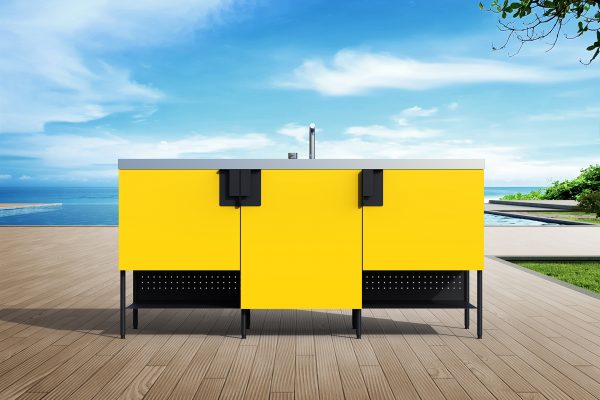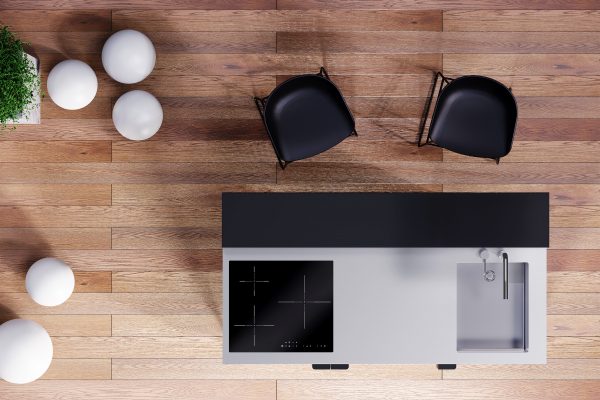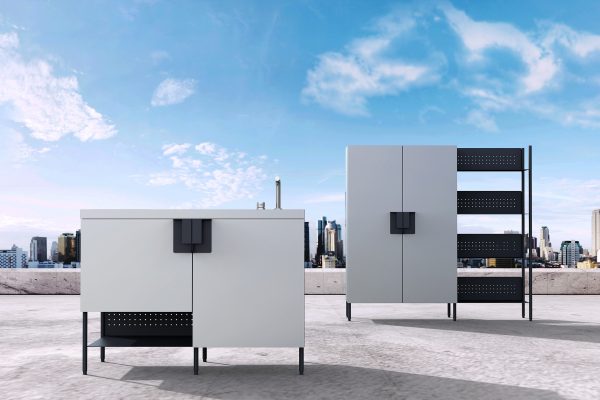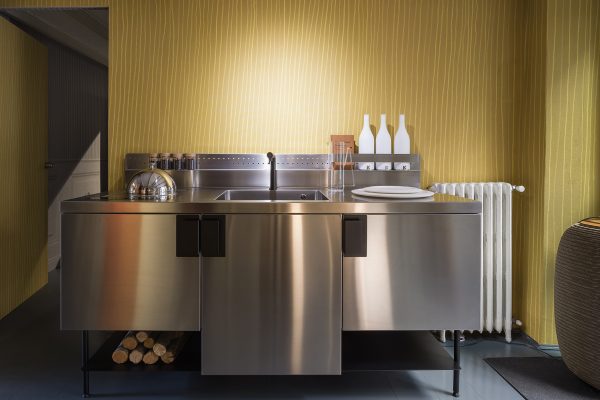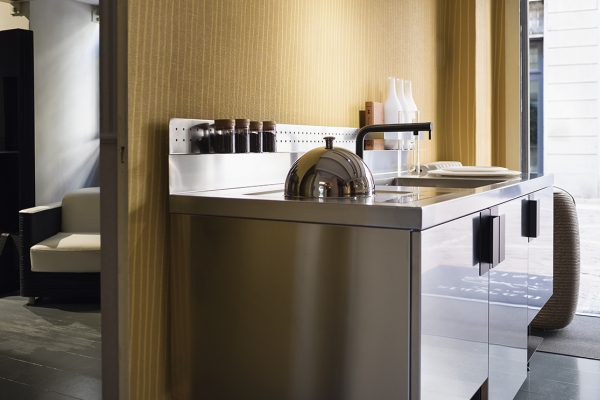An architecturally inspired kitchen
ÀTRIA is the new outdoor kitchen by Abimis. But that’s not all… ÀTRIA is the first Abimis kitchen designed specifically for outdoor installation.
Designed by Studio Delineo with Massimo Rosati, the ÀTRIA outdoor kitchen draw its inspiration from the world of architecture. Its geometric and simple silhouettes is characterised by a rigorous alternation of full and empty spaces with harmonious proportions.
And just like in an architectural design, the simple and geometric shapes of this outdoor kitchen have been devised to interact with natural light and to assure ever-different variations in colours, which vary as time passes.
Attention to detail
Atria is a design kitchen whose details are projected to be the real protagonists. Just like fashion accessories, which bring life and personalise even the most basic outfit.
The ÀTRIA outdoor kitchen is characterised by a studied contrast between the geometric and minimal body of the kitchen and the structural/functional elements.
The handles, the legs, the shelves, the backsplashes… These details, all fully customisable, play a leading role and strongly distinguish the design. Each detail embellishes and personalises the structure of the kitchen, making each model a one-off and different from any other.
The storage modules are available in 2 different heights. They are made of satin finish stainless steel, orbitally polished by hand or painted in any RAL colour. Also, the handles are in contrasting painted stainless steel.
The ÀTRIA outdoor kitchen collection affords an extensive choice of matching modular accessories, such as the equipped back panel, that comes in endless configurations.
In this way every chef is able to create a completely customised kitchen, which is also functional and ergonomic. A kitchen that adapts perfectly to every outdoor space and every home style.
From historic houses and country villas to nowadays most futuristic buildings.
ÀTRIA’s structure is supported by thin steel legs, as slender and slim as the pillars of rationalist architecture, with adjustable feet that guarantee maximum stability even on uneven ground.
The stainless steel structure
Like all Abimis kitchens, ÀTRIA is a stainless steel kitchen. It is in fact made entirely of Aisi 304 stainless steel, which comes from 100% recycled sources and therefore it is, in turn, infinitely recyclable.
This metal alloy is particularly resistant to impact, corrosion, humidity, frost and heat. That’s why the ÀTRIA kitchen can live outdoors 365 days a year. Finally, steel is anti-bacterial and very easy to clean, guaranteeing maximum hygiene and safety when cooking.
If the ÀTRIA kitchen is to be installed by the sea or the swimming pool, it can be made of AISI 316 stainless steel, a special alloy to which a percentage of molybdenum is added, which is guaranteed against corrosion even in environments rich in chlorine and salt air.
Why the name ÀTRIA?
The name ÀTRIA stems from the Latin word àtrium. Ever since the Paleo-Italic times, the atrium has constituted the heart of the home, the room that played host to the domestic hearth and where family life took place.
With the later urban development of the Domus Romana, the atrium became the inner courtyard of the house. An open space, often with a porch, around which overlooked the dining room (the tablinum) and all the other rooms of the house.
The atrium was also used to collect rainwater, which flowed into a special basin, the impluvium.
In the Atrium also the altar was found, where the Romans worshipped the Lares, the protective spirits of the house.
In the ancient history of the Italian home, the Atrium is therefore the most sacred and symbolic place: first the hearth, the vital centre of domestic life, then the open space that ensures the life and the well-being of the home (light, air, water) and, through the guardian deities, also the protection of the family.
The choice of name is not random, in fact, the ÀTRIA outdoor kitchen by Abimis is intended to bring together these two ancient symbols of domestic life: the hearth and the open space of the home.

